- Top
- Culture
- Annual Event
- Hiyashi-Chuka
Hiyashi-Chuka
Feature of summer food Hiyashi-Chuka!
July 7 is not only Star Festival day but also Hiyashi-Chuka day. Hiyashi-Chuka is a Japanese dish consisiting of cold noodle served with eggs, tomatoes, cucumbers and roast pork.
It is a feature of summer food in Japan. July 7 is the small heat day(Shosho) in the twenty four seasonal turning points of the old Japanese calendar, so this day is made the Hiyashi-Chuka day.
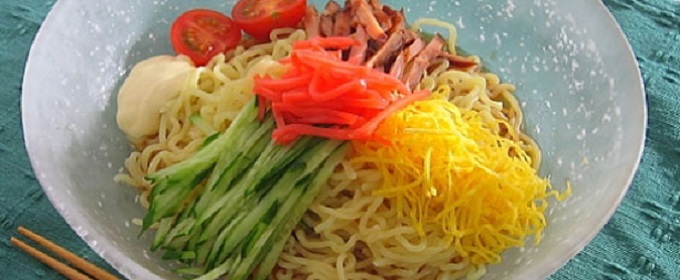
There are several theories about the origin of Hiyashi Chuka, but popular theory is that ramen shop Ryu-tei in Sendai made first Hiyashi Chuka in 1937. The owner of this shop made it because ramen which is hot and greasy didn't be sold in summer. In addition, Hiyashi Chuka originated in Japan though its name inclues Chuka which means China or Chinese in Japanese. It made from Chinese noodle, so its name includes Chuka. Therefore it don't be sold in China.
There are regional differences in its name and ingredients after it spreaded into all over Japan. It called Hiyashi Ramen in Hokkaido, and called Reimen in Kansai region. People in Tokai region add mayonnaise to it. That often causes a controversy, whether add mayonnaise or not.
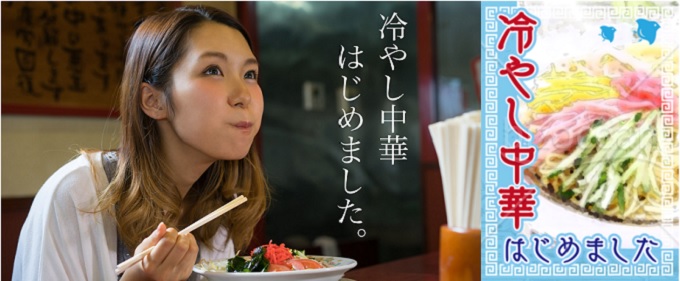
In addition, ramen shops set up a sign saying "Hiyashi Chuka hajime-mashita" means we have Hiyashi Chuka when ramen shops serve Hiyashi Chuka in summer. Most Japanese associate this phrase with begining of summer soon. There are several summer songs with this phrase in Japan. Japanse famous TV personality Shinya Ueda often says "It's too late like the ramen shop starts serving Hiyashi Chuka in November".
On the other hand, ramen shops don't set up a sign when they stop Hiyashi Chuka in autumn. It disappears from a menu without any signs.
Many ramen shops start serving Hiyashi Chuka from May to September, and some convenience stores start selling it from April. The term of eating it is so long though it is a summer dish. If you travel Japan in summer, you can enjoy Hiyashi Chuka and Japanse culture.
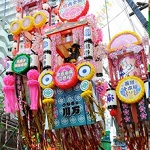 Star Festival
Star Festival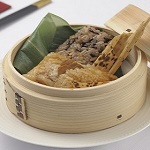 Boy's Festival
Boy's Festival Umi-biraki
Umi-biraki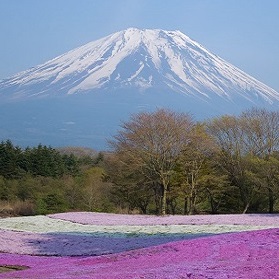 Yama-biraki
Yama-biraki